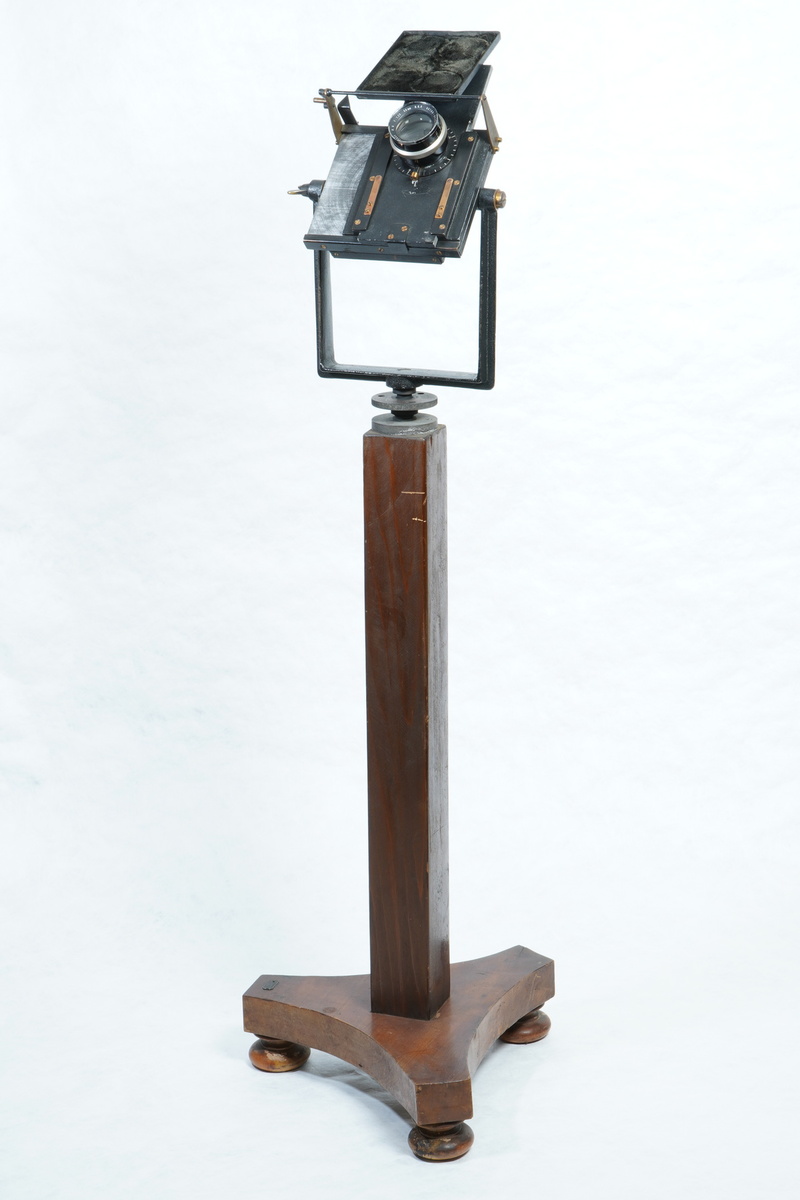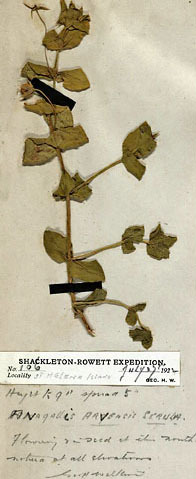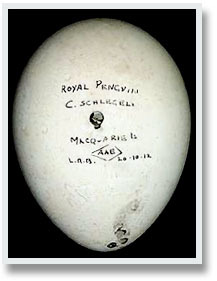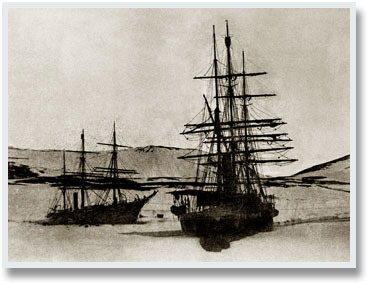Antarctic Exploration

The Polar Regions have long held a fascination for explorers.
Expeditions to reach the South Pole are well documented, but Antarctic exploration has not been restricted to this. Scientific investigations have for some time provided the main purpose of Antarctic expeditions.

This Scarlet Pimpernel (Anagallis arvensis)
From the Shackleton-Rowett expedition to Antarctica.
The Herbarium contains a collection of 28 sheets of higher plants collected on the Shackleton-Rowett Expedition to Antarctica in 1921-22 that is described as the last journey of the Heroic Age of Antarctic exploration. It was Shackleton's final expedition, during which he died on the morning of the 5th of January 1922 in South Georgia. John Quiller Rowett, an old school friend of Shackleton's, was the expedition's sole financial backer. Rowett also helped establish the Rowett Institute in Aberdeen, now part of the University.
There are also 30 sheets of specimens collected during a British Antarctic Survey expedition in 1967, with a further 29 bryophytes from the Antarctic territory.
Royal Penguin Egg
The Australasian Antarctic Expeditions (AAE) (1911-1914) set out to investigate 2,000 miles of unexplored coastline. Cartographer Leslie Russell Blake collected and recorded this Royal Penguin egg on Macquarie Island, and it subsequently found its way into the Zoology Museum collection.
The Zoology collections also contain nine Giant Petrels collected by J. Conroy of the British Antarctic Survey on Signy Island, S.Orkney Islands, in 1969.
A small display of penguins from the Antarctic can be seen in the upper gallery of the Zoology Museum.
Terra Nova and Discovery tied together
Photographed by W.C. Souter
The University's Archives contain written material from early expeditions. This includes medical accounts from the Antarctic Relief Ship Terra Nova, which had been sent to free the Discovery from ice in McMurdo Sound in 1903. The accounts were written between 1903-04 by William Clark Souter, a former student at the University of Aberdeen. Souter had been appointed ship's surgeon shortly after his graduation, at the request of Sir Alexander Ogston. For his service in the Antarctic, he became one of the first recipients of the Polar Medal, instituted in 1904 for members of Captain Scott's first expedition to the Antarctic.
To see more of William Clark Souter's photographs from the 1903 - 1904 Antarctic Trip, look here.

Auroral camera ABDNP200561a
Auroral Camera
This very rare auroral camera was used by the meteorologist James Paton to record auroras as part of his interest in upper atmospheric physics. Papers from the Balfour Stewart Auroral Laboratory in Edinburgh, which was set up by Paton, are held in the Archives. These include auroral observations from the Northern and Southern hemispheres, 1976-1999; noctilucent cloud observations, 1964–1980; and material from the International Polar Year, 1932–1933.



